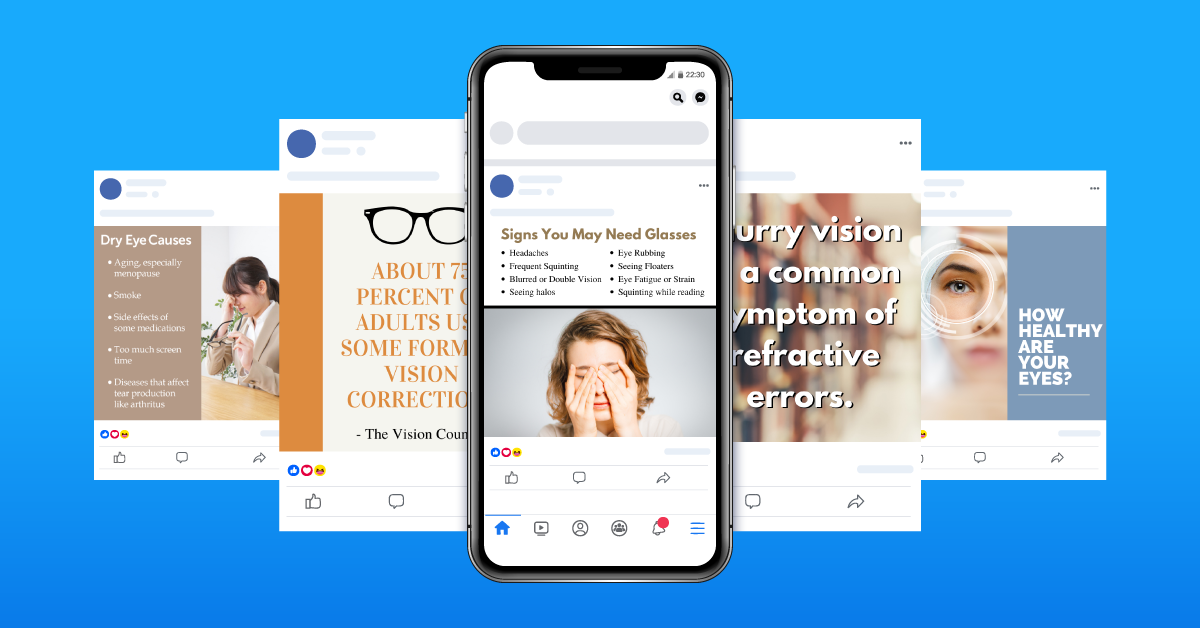How to Create a Social Media Schedule
Are you seeing the success you want from your practice’s social media pages? These days, it’s not enough to simply post on social media, you need to post great content on a regular schedule that’s true to your brand.
Consistency is essential to your practice’s social media presence, from what times you post to what tone you use with your audience. Not only will this consistency enable followers and patients to get to know you a little better, it will show clients what they can expect from your practice and set you apart from your competition.
If you’re thinking, “where do I start?”, don’t worry, we have you covered. We will go over a step by step guide on how to begin creating your own social media schedule for your practice.

Choose the Right Social Media Platforms
Not every platform is created equally. Some platforms call for image based content while others are typically used for news or link posts. Depending on your audience, you may not need an account on every social media site. Choose the one that fits your demographic and your social media marketing needs best. Let’s take a quick look at four widely used social channels.
Facebook reigns as the most popular social media platform with 2.2 billion active users. That’s right. 2.2 Billion. This social site is also favorited by brands, with about 65 million businesses using this network to connect with current and potential consumers. Is Facebook the right network for your practice?
This platform is an excellent mode to share a variety of content, including images, videos, and links, with a wide demographic. The goal on Facebook is to encourage engagement by sharing content that your audience will interact positively with and want to share with their own friends. Video may perform best on the platform, which is unsurprising considering nearly 80% of all web traffic will go to video by 2019!
In our humble opinion, your practice should be on Facebook. Firstly, you will be able to connect with your community easily and organically. Plus, your engagement on social channels like this can also help your practice rank better on search engine results pages, or SERPs.
Instagram is another widely used platform for brands to share their stories. The site has 500 million users every single day that log in to browse a timeline of images. If you want to reach a younger audience, this would be the network for you. 59% of U.S. users are under the age of 30!
This social network is best for businesses that have a lot of image-based custom content to share. Many users will skip over text, so you want your photos to capture the essence of what you want your audience to do. For example, if you are having a special that month, it’s best to put it in text on the image than to write it in the text only.
While Instagram is a popular platform for boosting brand awareness, this doesn’t often translate into visits to your website. If your goal is to increase web traffic and drive conversions (turning a website visitor into a new client), then you may want to consider another platform.
Twitter has a consistent following, retaining a steady increase or neutral level of users over the last five years. The site has 330 million active users, coming in third on our list of most popular social media platforms. These users are most likely to be between the ages 18 and 29, making this an ideal way to connect with millennials.
Many Twitter users admit to getting their news from the channel by seeing what trending topics are being discussed each day. News outlets, such as CNN and the New York Times, are some of the most followed pages on Twitter. For your practice, consider sharing real-time updates on your business and links to information you think your audience will value.
LinkedIn is frequented by companies and business professionals seeking connections and information. While this platform may not generate the most leads, it will give your practice another space to occupy online, making it easier for potential clients to find your business.
When deciding whether or not to build a LinkedIn profile, consider that it is always good to claim your practice’s name online so that others can’t snake your business name and branding. Since LinkedIn is a site for professionals, maintaining a profile will provide you with an additional way to create credibility and trust in your practice as well as establish yourself as an authority figure in your field.
Create Cohesive Branding
Before you dive into social media marketing, it’s important to decide how you want to brand your practice. Branding your practice can increase recognition of your practice within your community and online, making it more likely that clients will remember your name the next time they need the services you offer.
Your brand is something that makes you different, and better, than your competition. In addition to your awesome work and superior customer service, branding can help increase client retention by providing an overall experience to your regulars.
Begin branding by drafting a mission statement and core values for your practice. Work with your team to decide how to best sum up your practice’s purpose in just a few sentences. For example, maybe you’re a chiropractor dedicated to providing drug-free, holistic treatment for personal injury patients. Be sure post your mission statement on your website, social channels, and in your office to remind your team and clients of what you stand for.
Your core values should tie back to your mission statement. Choose one word or short phrases that encompass what is most important to you as a business. These core values need to be authentic, so again, consult with key associates. Plus, this can be a great team building exercise!
Next, choose color schemes, fonts, and other visual elements that you can use on your collateral, from printed forms to emailed newsletters to social media images. Try doing some research on how different colors affect the brain so that you can help elicit the best response from your audience!
Draft a Schedule
Now that you have all the basics covered, it’s time to jump into creating your first social media schedule. To get started, check out our revamped Social Media Calendar, an infographic we created from our years of experience and research in the digital marketing field. We’ve taken your industry-specific needs into consideration when determining the best days and times to post on various social networks.
However, pay attention to how your audience interacts with these posts. You might have the most engagement in mid-afternoon while your clients are grabbing lunch and scrolling through their smartphones. Or, you may see the most likes pop up on your screen when your audience is setting down in the evening.
Many sites, like Facebook, make it easy for you to track and analyze data. For an in depth look at how to navigate Facebook Insights, download our free eBook, appropriately named Everything You Need to Know About Facebook Insights.
Once you learn how to best track metrics on your social media pages, take a pause to analyze this data and adjust your schedule as necessary. This data will also tell you what kind of content performs best on each channel, which gives you the opportunity to strengthen your connection with your clients online.
Get to Posting!
We hope this guide and our resources have given you the tools you need to begin building your social media following. For any questions, please contact us at 800-462-8749 to speak with our team of consultants. We’re here to help!

Looking for more resources to help you learn how to reach your business goals?
Check out these articles!
How to Build Your Business’s Facebook Profile
The Importance of Branding Your Eye Care Practice Website
What We Can Learn From the Best Twitter Accounts



